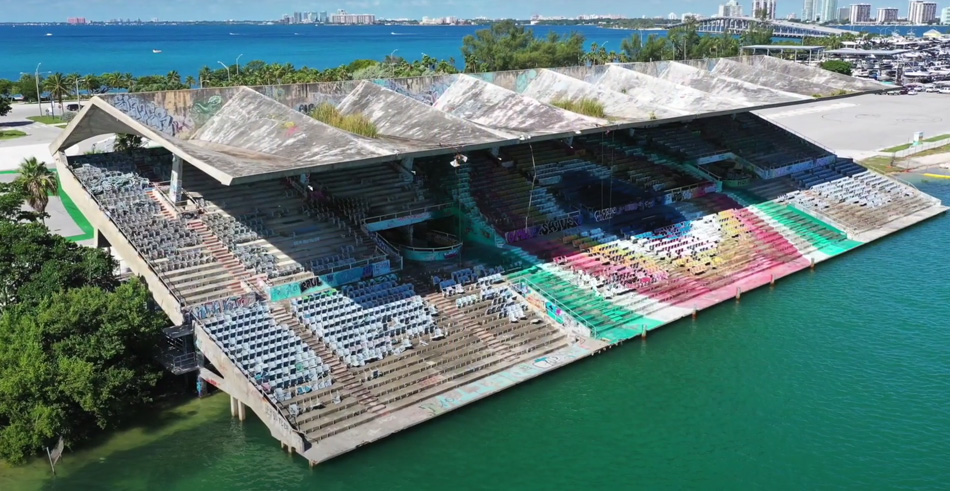After years of delays, Miami is finally making strides toward restoring the historic Marine Stadium on Virginia Key. City officials are advancing plans that could lead to a voter referendum before the end of 2025, potentially setting the stage for the long-anticipated revival of this architectural landmark.In late January, the city issued a request for proposals (RFP) seeking a private operator to manage the stadium as a concert and performance venue. This move represents a significant step forward in efforts to renovate and reopen the 1963 stadium, a project that has seen little progress since former Mayor Tomás Regalado’s administration first proposed it 15 years ago.
A Fast-Tracked Selection Process

The RFP outlines an expedited timeline, with the goal of selecting an operator in time for the November 4, 2025, citywide election, when voters could weigh in on the choice. The selected operator would be responsible for shaping renovation plans, programming events, and managing the venue. The city has emphasized that the stadium should host world-class concerts and performing arts events, ensuring its viability as a premier entertainment destination.
Applicants must also submit a business plan detailing how the venue will sustain itself financially. While the city intends to fund the stadium’s restoration, the total cost remains uncertain. Initially, Miami approved $45 million in bonds for the project, but that authorization expired amid shifting political priorities. Recent estimates place the cost at over $62 million, reflecting rising construction expenses.
A Landmark in Need of Renewal
Built in 1963, the Miami Marine Stadium is widely celebrated as a masterpiece of architecture and engineering. Located along the Rickenbacker Causeway, the venue once hosted thrilling boat races, major concerts, and even Easter sunrise services. However, financial struggles led to its closure in 1992, following Hurricane Andrew. Despite reports indicating minimal storm damage, the stadium remained shuttered.
Over the years, preservationists and community advocates successfully campaigned to protect the stadium’s historic designation. While the city has confirmed the structure remains sound, the venue has primarily served as a graffiti canvas. In 2024, Miami completed $3 million in repairs to its corroded grandstand support columns, a small but crucial step toward full restoration.
A Clear Vision for the Future
Though the city has a conceptual renovation plan from architectural firm R.J. Heisenbottle, the chosen operator will be responsible for refining the design and adding necessary facilities to modernize the stadium. This includes a floating stage to replace the former barge-turned-performance platform and designated spaces for food and dining.
To address concerns from downtown and Brickell residents about potential noise issues, the city will require the operator to hire a full-time sound engineer and install monitoring equipment to control amplified sound.
The selection process is moving swiftly:
Site tours for potential bidders will take place this month.
Proposal submissions are due in April.
A winning bidder will be chosen in May.
If voters approve the selected operator in November, the firm must submit its detailed renovation and management plan within 30 days.
A Promising Outlook
A key factor driving this renewed momentum is a recent study by AMS Planning & Research, which found that a restored Marine Stadium could become a top-tier venue, comparable to Red Rocks Amphitheater in Colorado. The report recommended hiring an independent operator to minimize financial risk to taxpayers.
For longtime advocates like Stu Blumberg, founding president of the Greater Miami Hotel & Beaches Association, this progress is long overdue.
“This is major, it’s real,” Blumberg said. “It’s more active now than ever. To me, this is exciting.”
As Miami pushes forward, all eyes will be on the November referendum—one that could finally bring this beloved landmark back to life.”


